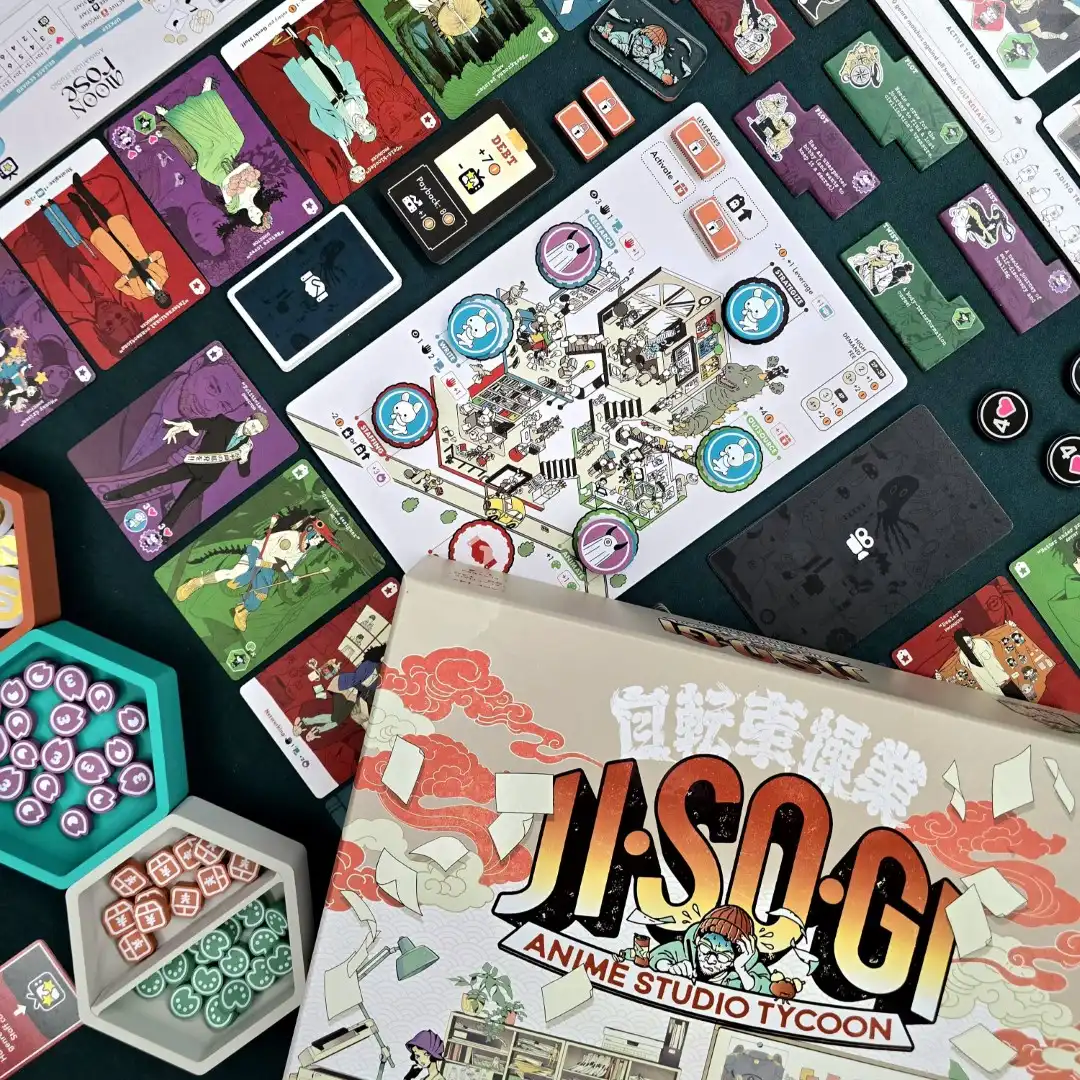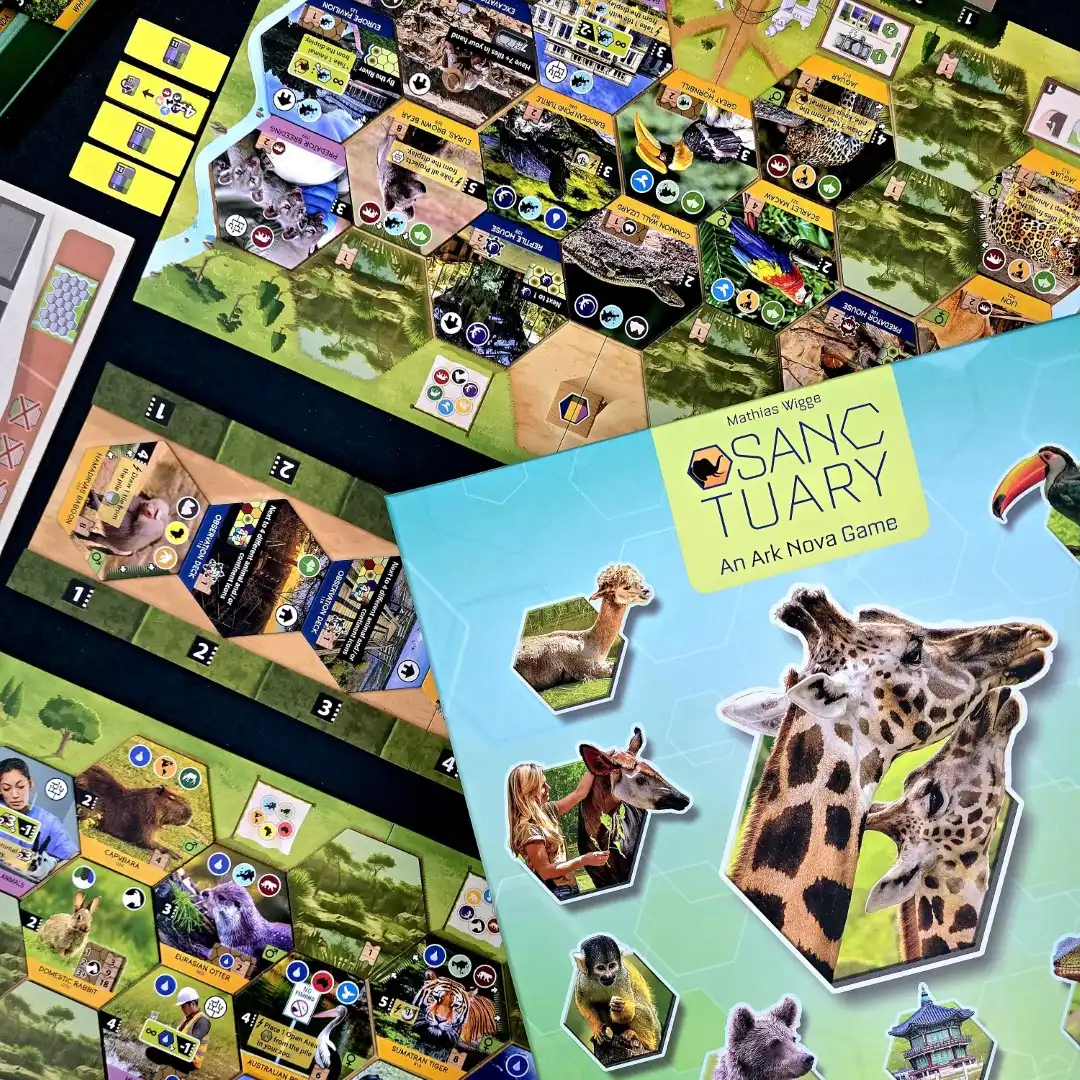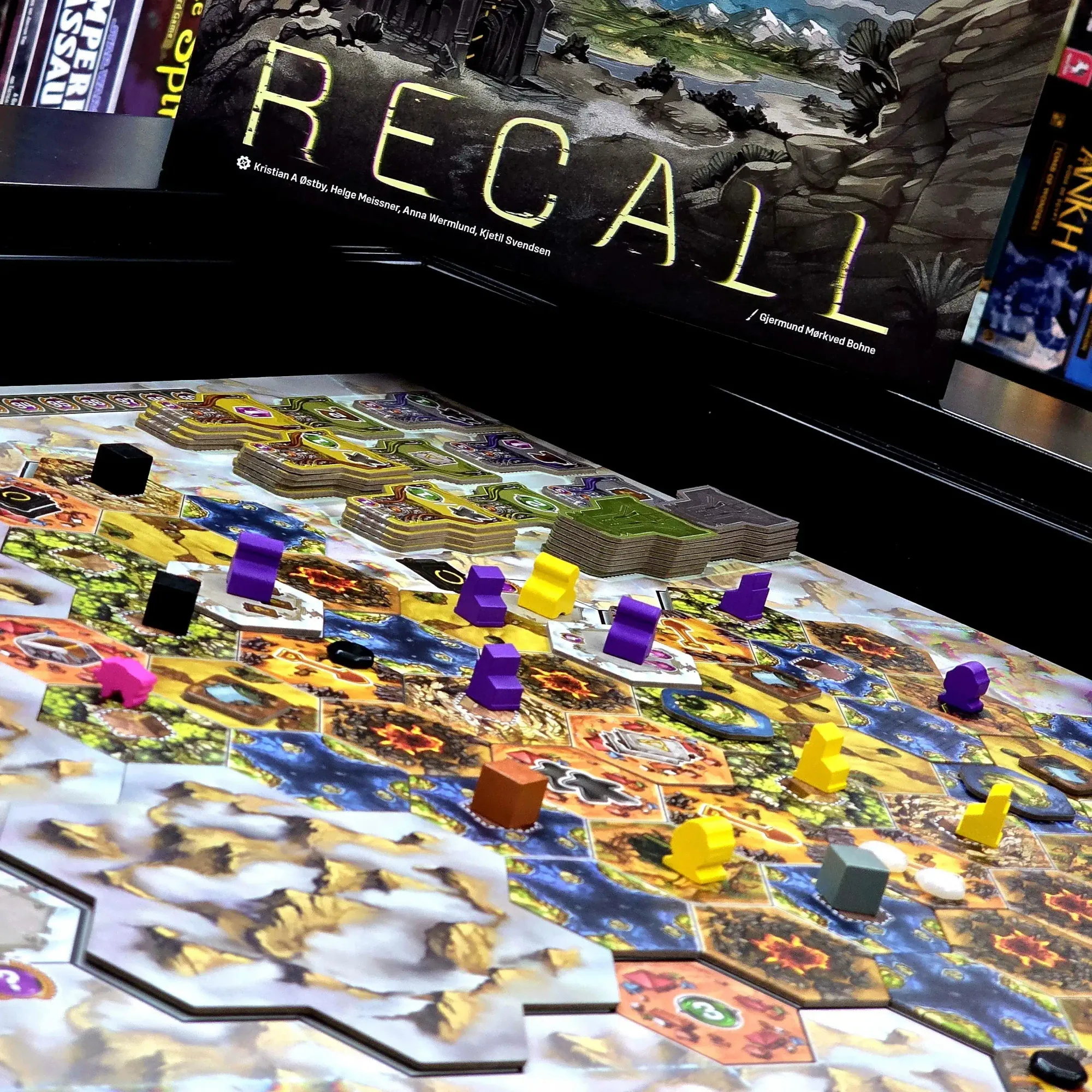Strings and Pushpins
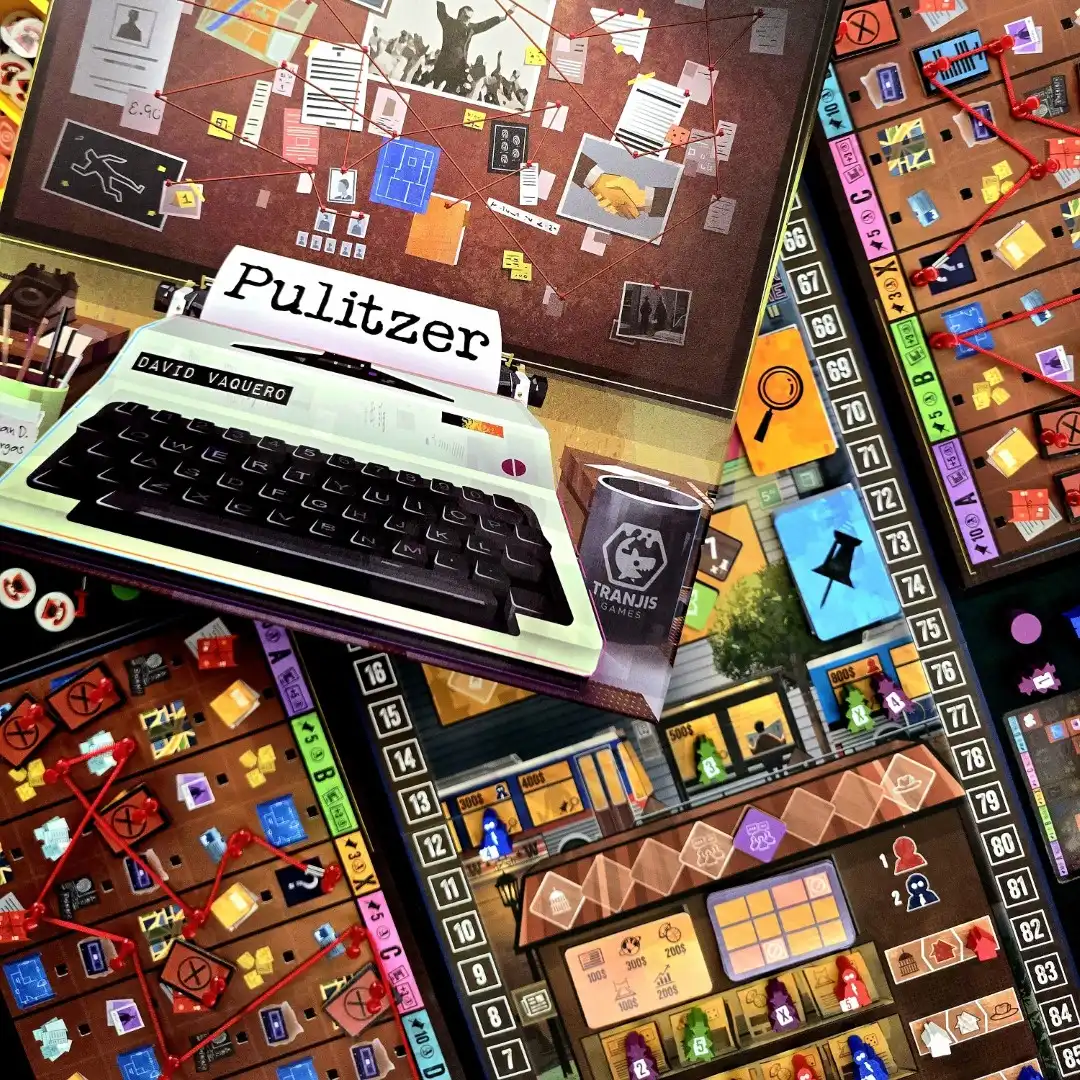
I never thought I’d see thumbtacks and red strings as official components in a board game, but I am incredibly happy that this became a reality with this game.
In Pulitzer you are the head of a news agency around the 1970s, leading a team of investigative journalists, trying to get to the bottom of a huge case (with the goal of hopefully winning the Pulitzer prize for it). In your investigations you are gathering all kinds of evidence, which you mark and connect on your little board - with pushpins and a string!
TL;DR
Pulitzer is a game of worker placement with workers of hidden strength values.
Stripped to its core, the game is about earning money through some actions that you spend on searching for evidence. Then of course you’ll pin those on your board for victory points. Other locations provide bonus cards or tokens to help you out with these main actions. There are multiple layers on top of this, making it a lot more intriguing. You never know what workers your opponents are placing, while fighting for row and column majorities and other bonuses. You have to prioritize and sometimes push your luck a bit.
The game leans more to the lightweight euro side, but it is definitely an engaging experience. There is a non-negligible amount of luck with the evidence cards, which can be frustrating at times, but the thematic integration counterbalances it nicely. Pinning evidence with the red string connecting them all is just super fun to do, and satisfying to see.
How does it all work?
Note: we played this only at 2p so far - we’ll go through the 3p+ rules, but our focus will be on the 2-player experience.
The foundation of the game is a mix of worker placement and blind bidding - your journalists (aka. workers) have values going from 1 to 5, and they are always placed with their values hidden. These are the people working in your agency with different levels of experience. There is also a meeple with an ‘X’ value that you get to upgrade as the game goes on.
There is a classical round structure, with a full game lasting 8 rounds.
Each round you just place out workers one at a time, keeping in mind that spots are blocked by workers - however it is not necessarily first-come-first-served everywhere, instead the value of your meeples might determine the order of activation. You also have 3 discs that can be used to get bonus tokens, but those spots are limited too, and you have to prioritize whether to rush for worker spots or these disc spots.
Once everyone is done with positioning their meeples, you will flip them faceup and resolve the locations in a specific order. Once everything is resolved, there is a bit of clean-up then you go to the next round.
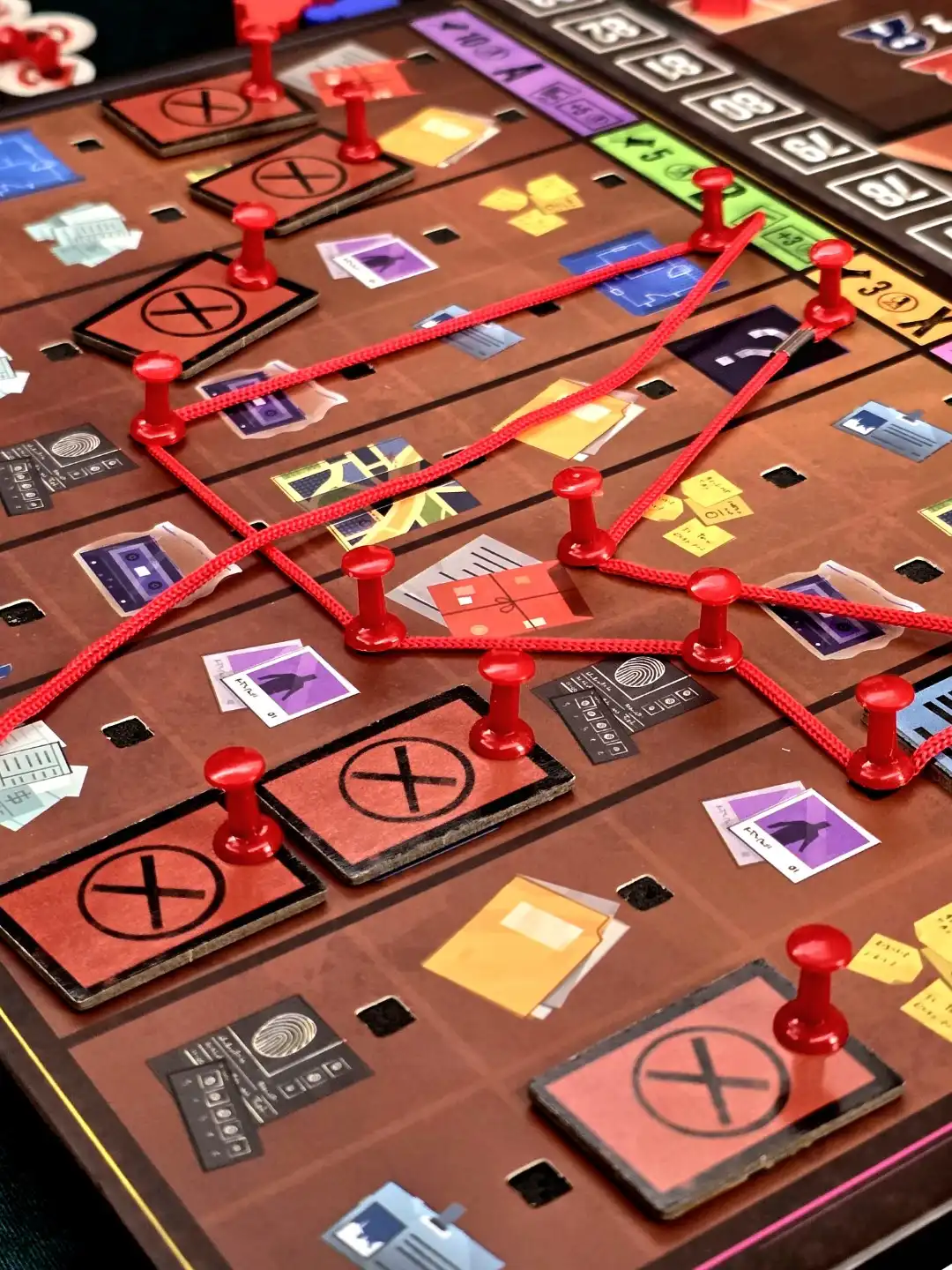
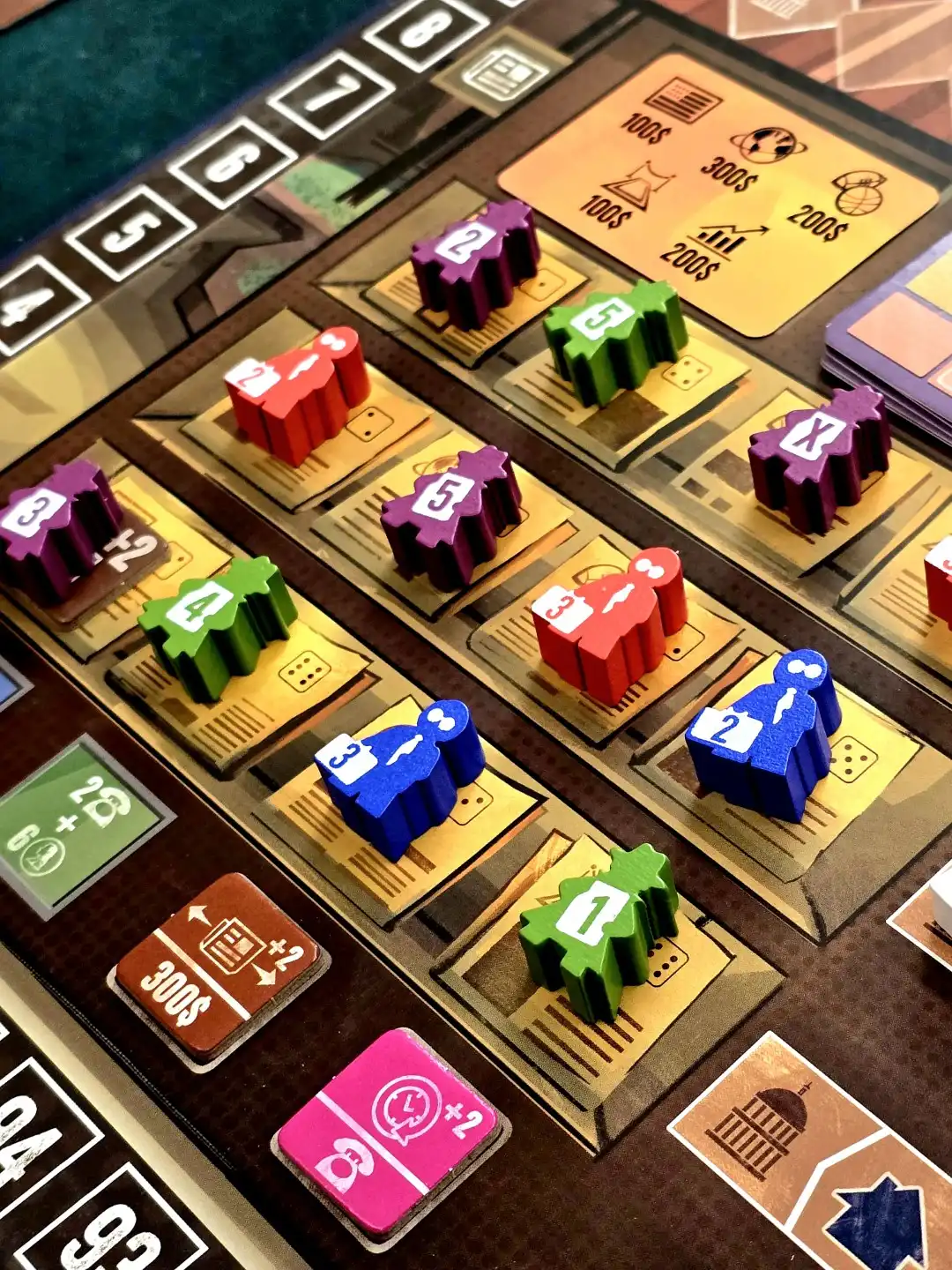
Left: the string and the pins are the real selling point, they're such a joy ; Right: worker placement with hidden values works great
The locations on the board
The bottom of the board is called the “Kiosk”. This is where you send your meeples to earn money. This money is the only thing you get immediately, otherwise the workers are only evaluated when everyone has placed them all. Each round a card determines how much each column is worth in the Kiosk, and additionally each column and row will be assessed for majority scoring according to meeple values for various bonuses.
Above the Kiosk are the “Buses”. By paying the money cost, you can send workers to gather evidence for your pushpin-board. The more money the slot costs, the more cards you will draw, meaning you will have better chances of finding something useful.
Above the Buses is the “Archive”, which is only available in 3+ player games. These slots just amplify your Buses actions.
In the “Overtime” area you can get one of the cards from the display, which provides you with various bonuses. There are more spots for workers than cards available, so people with too low of a value might get nothing.
The “Newspaper” area at the top of the board is where you can place your discs to get bonus tokens to add to a worker you are placing in a future turn, improving the action in some way. This is also where you can upgrade your X-Journalist.
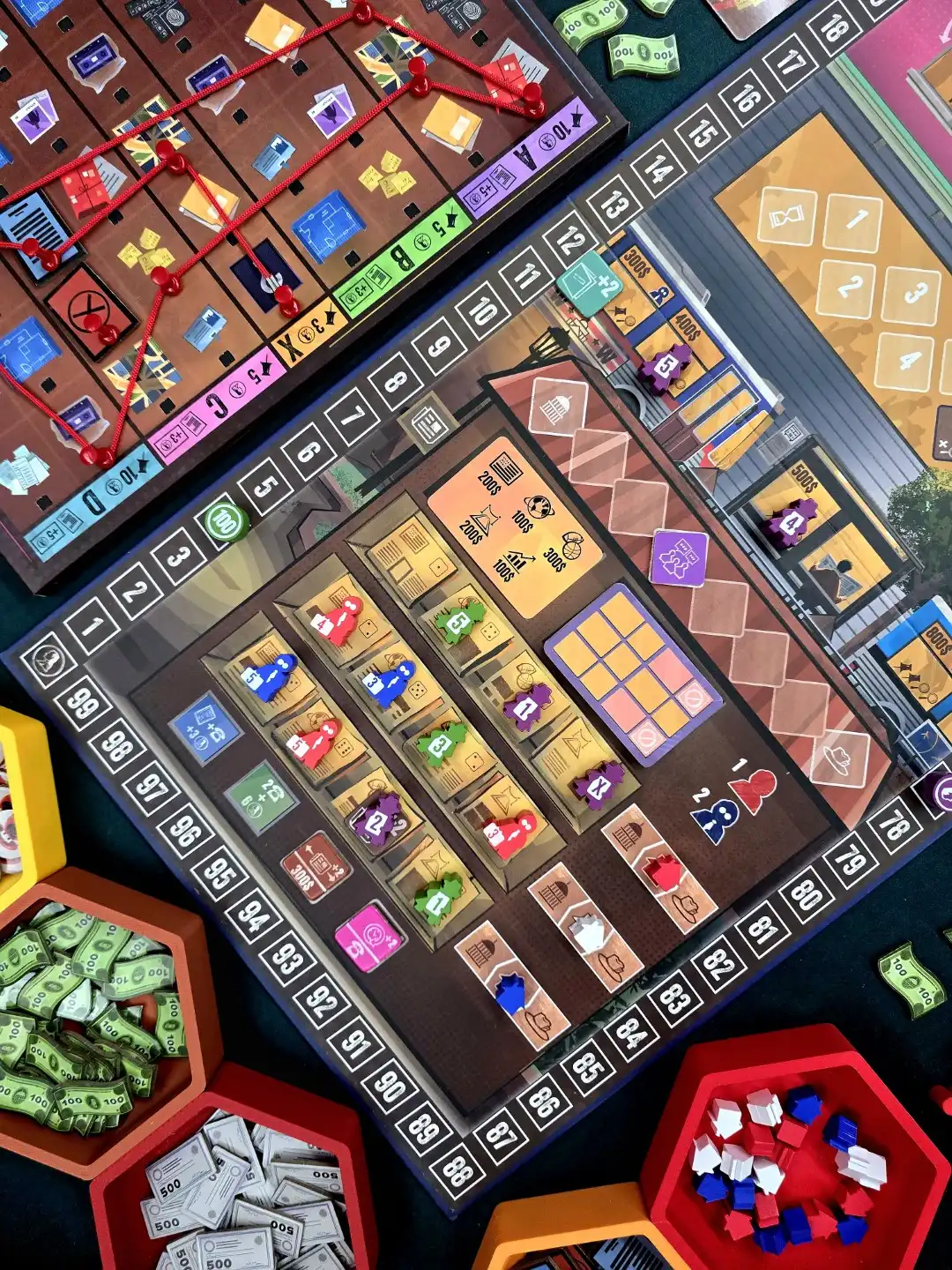
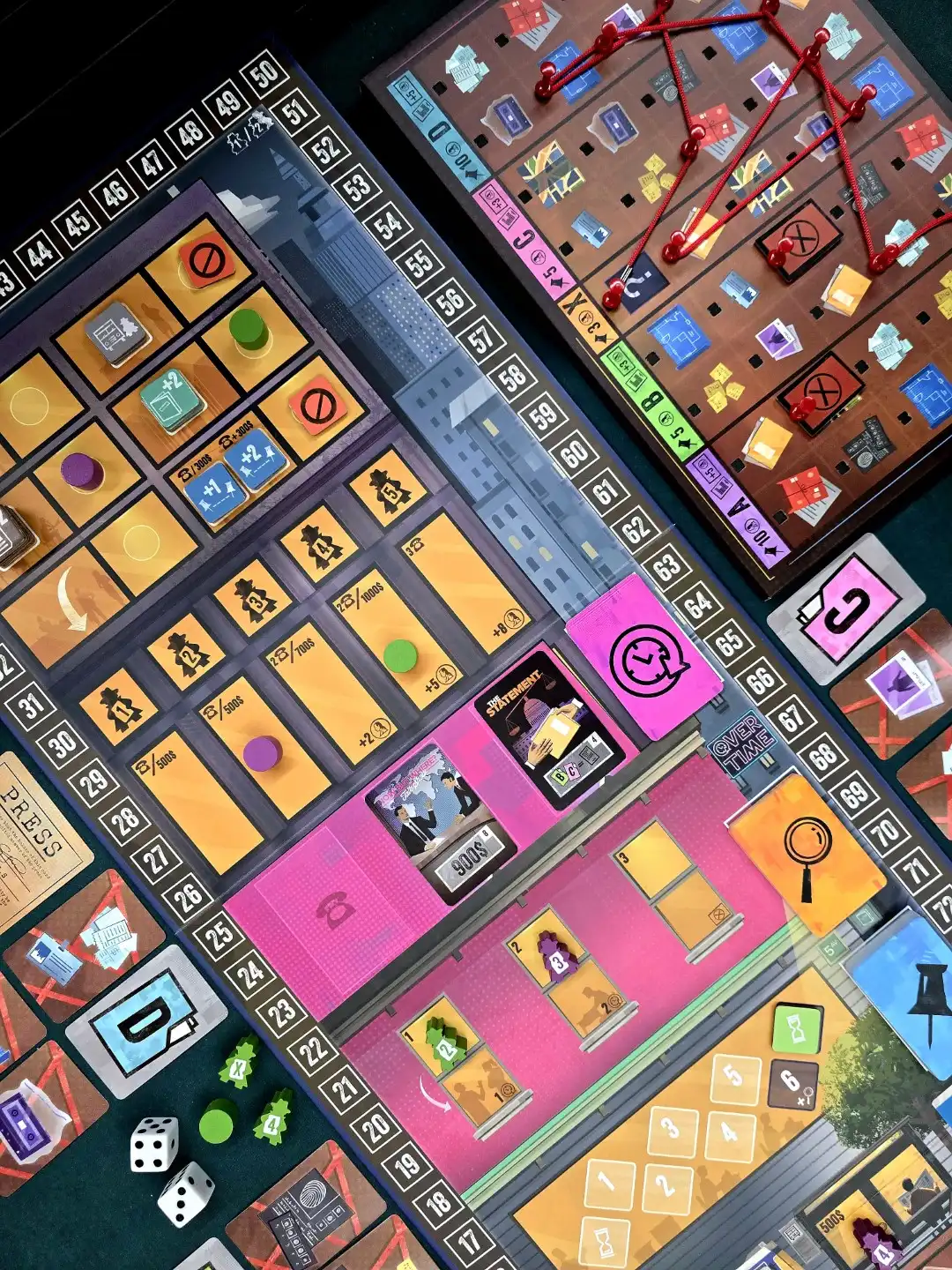
Left: the lower board with the Kiosk and the Buses ; Right: the upper board with the Newspaper and Overtime
Gathering Evidence
The first thing that drew me toward the game was definitely the gimmick with the investigation boards: the red string and pushpins to mark evidence, so obviously this is also the main focus of the game. This is your biggest source for victory points, and all the actions revolve around getting more evidence marked by pins. (By the way, your investigation board is a cardboard box with a pad of foam inside that can hold the pushpins - it’s pretty clever.)
When you send workers to the Buses, you get to draw Evidence cards that depict different symbols (like maps, blueprints, cassettes, IDs, etc), and so-called “Investigation Line” cards that show letters. For each worker you send, you have to choose a pair of cards and mark the specified evidence type in the section of your board with the matching letter.
There are multiple details to explain here: First up, at setup you get a Report card for the case you are working on. This shows some highlighted evidence that you will aim to gather. If you do not mark at least 5 of the highlighted things on your board by the end, you will score 0 points and lose the game. If you succeed though, non-highlighted evidence is also worth points.
Secondly, you can’t just mark any evidence as you wish. The strength of your meeple determines your orthogonal movement range, starting from your last pushpin. This is a really big constraint!
There is destroyed evidence too: Every now and then you might have to cross-off highlighted evidence, so you can no longer gather those, restricting your options.
Your string itself also counts as a resource. It has a limited length, you see. Even if you can jump big distances between clues, if you don’t plan well you might run out of string before the game ends. Luckily each round you can remove the last pin before a new pin-placement so you have some possibility to pivot.
There is a bit of a push-your-luck aspect to this Evidence gathering, which might leave a sour taste for some people. You might end up paying a bunch of money and sending out a journalist, then drawing cards for something that you already marked, or destroyed, or cannot even reach. This is why you often want to draw multiple cards, and use other actions or tokens to ‘upgrade’ this action. Thankfully, if you send multiple journalists, you can see all their cards, do some “route-planning” for your evidence pins, and execute the actions in the order of your choice.
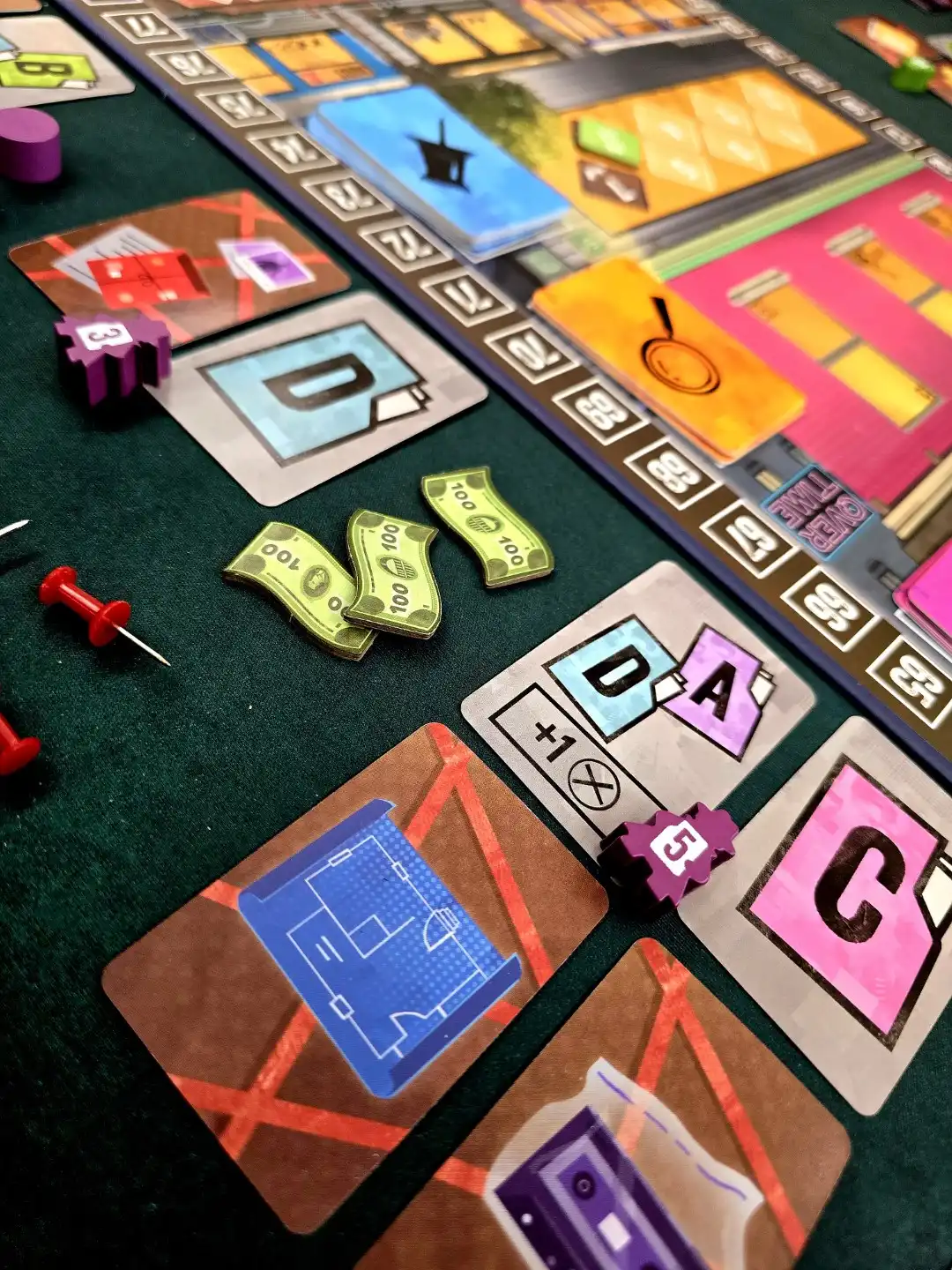
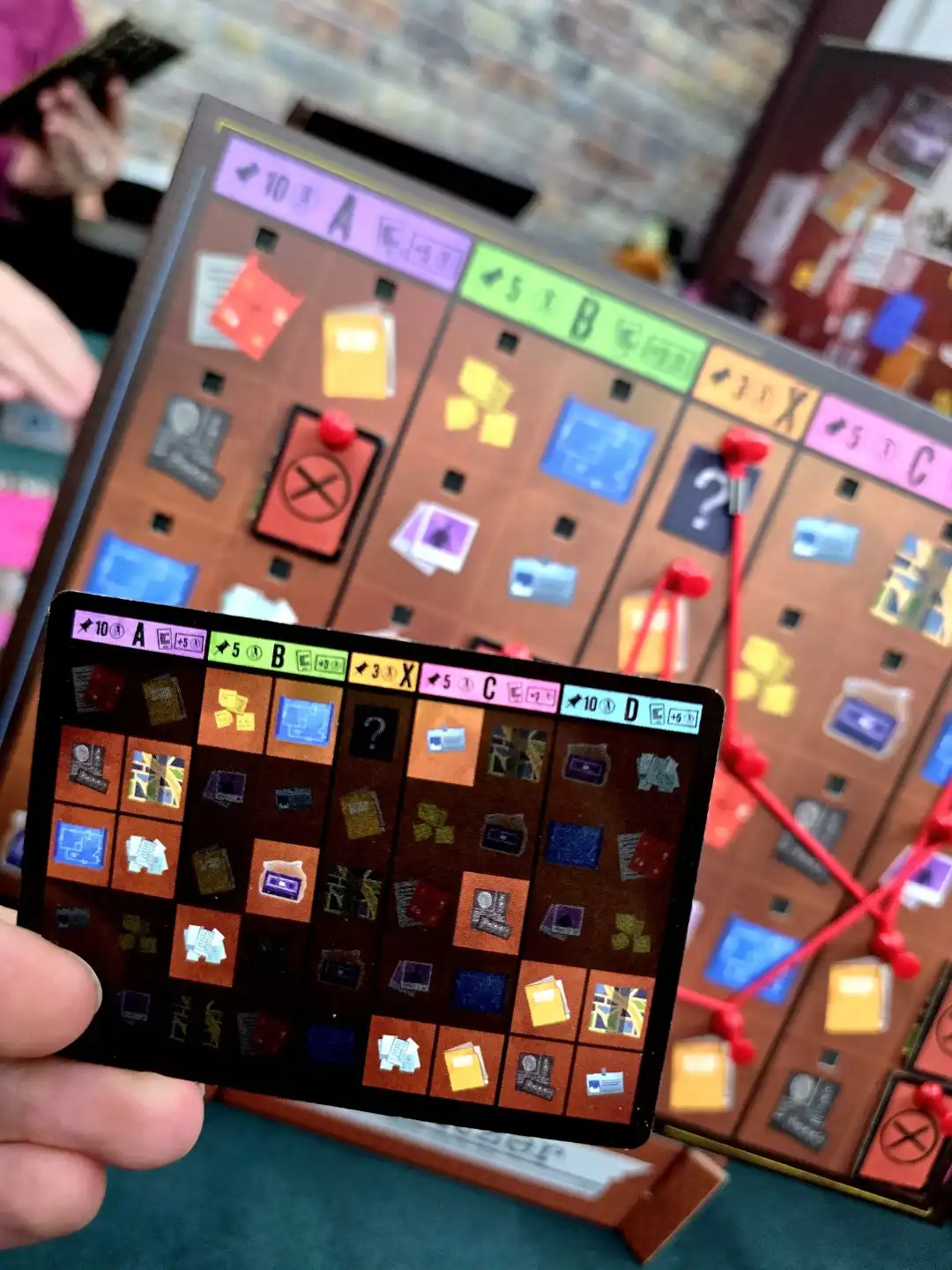
Left: Evidence and Line cards from the Buses action ; Right: your Report card shows the important highlighted evidence
The two-player variant
You might think here that the secret worker placement bundled with the majority scoring falls flat with 2-players, but that is not the case. There are some significant changes though, when playing with two (this is how we experienced the game).
First of all you use the other side of the game board with less worker slots. The aforementioned Archive area is also missing, instead there is a track for Public Opinion, which is the primary change. Additionally, there are also Government Agents that will be placed each round on the Kiosk’s slots.
In the Kiosk area, winning a majority in a row for a 3+ player game meant you got a little house token, with set-collection rules for the four different colors. That is completely gone here, instead, winning or losing will move the tug-of-war track of the Public Opinion. It’s not a 1v1 tug-of-war thing however, instead you are semi-cooperatively working against the government and its agents. Each round you evaluate row majorities and adjust the track accordingly. If the marker swings completely to the left, then the public has lost its trust in the press, and you both lose. If it swings completely to the right, you instantly go into scoring, which could be bad if you don’t have at least 5 of the highlighted evidence yet.
You roll dice to see what slots get the neutral government meeples. It’s a simple but effective way, always changing what rows or columns are more contested. Blue agents are placed face up, but red agents are always facedown, so you do not know their values. This adds a bit of a push-your-luck element. An important thing to note is that these agents do not block spots. If a player journalist is in the same spot, then before evaluating actions, one of them will be removed depending on the value. Players only have to be equal or higher to “win”. Kicking out government agents in this way is also quintessential for winning row majorities, because 8-10 agents will always be in the grid. Of course these neutral meeples also do a great job to remove the zero-sum nature of majority scoring at 2p. And let’s not forget those agents with value face up. Placing one of your journalists there could give info away about the value you used… unless you are bluffing of course.
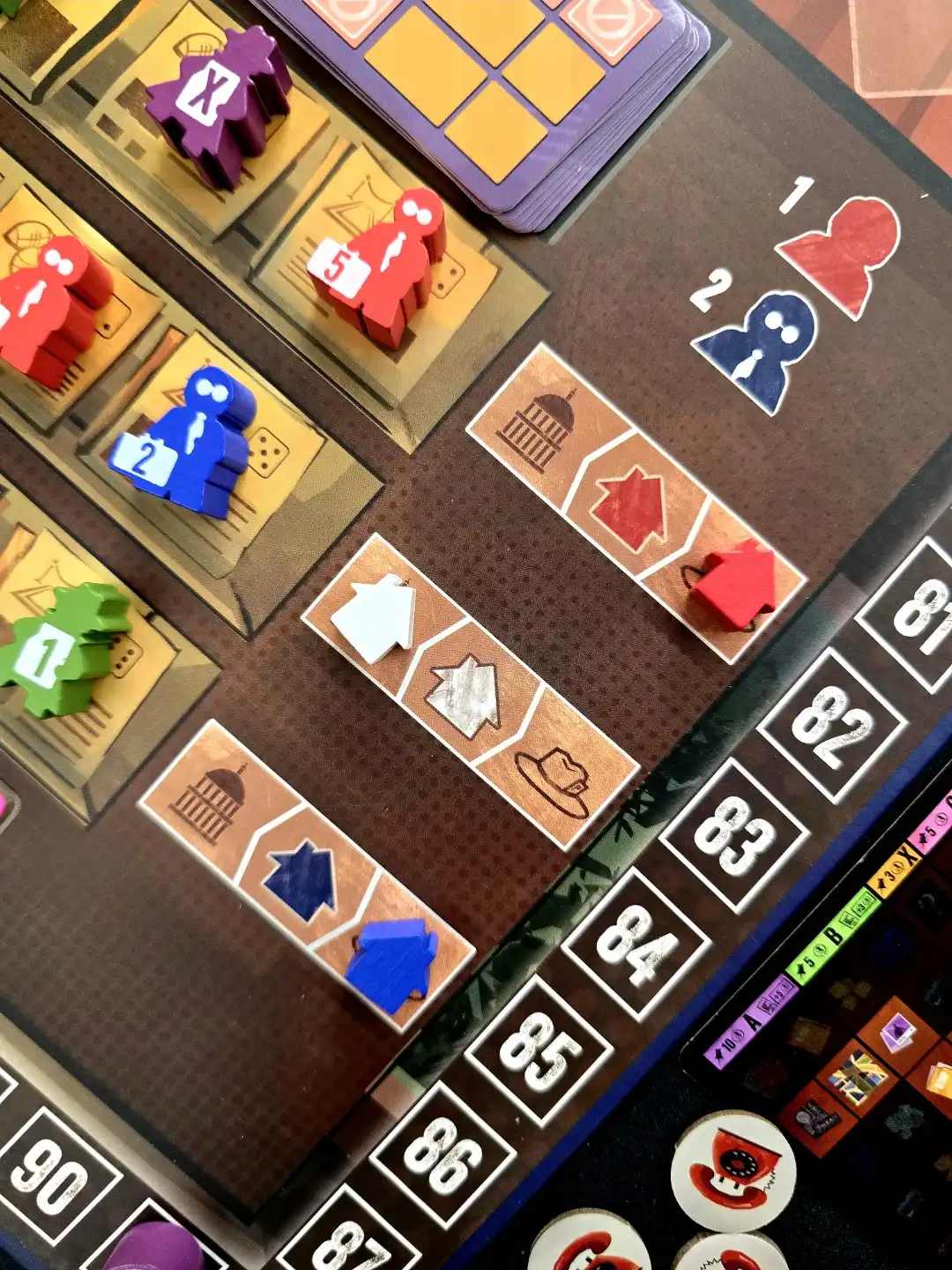
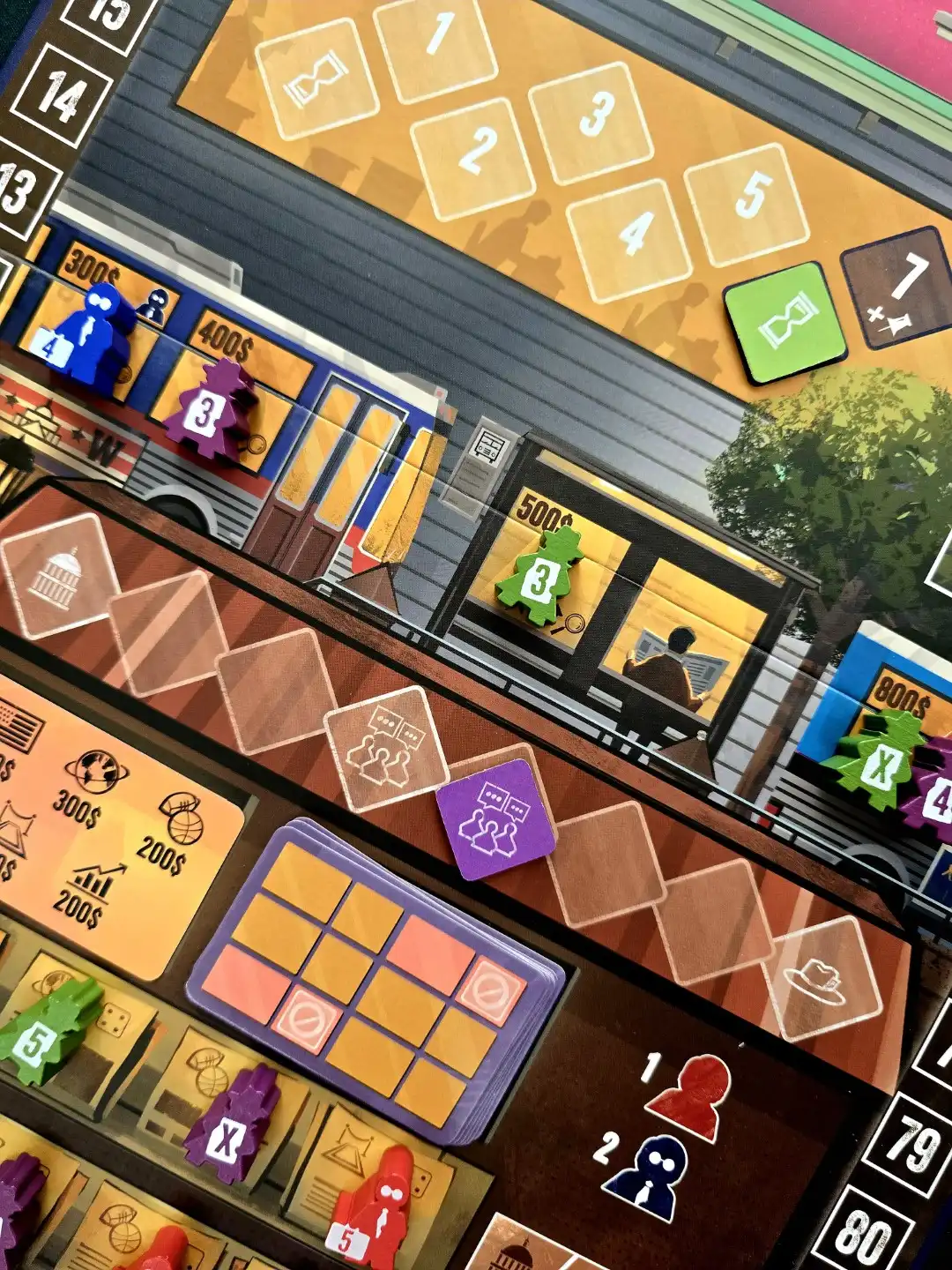
Left: the row majority in solo/2p determines which way public opinion sways ; Right: the track for the public opinion
One or two agents might go to the Buses area too, where they act against the players. If they aren't removed, they will draw cards during the resolution phase to destroy evidence on the players’ boards, making things harder.
There is also a turn track in 2-player games, which raises the stakes a bit. The first player can decide to end the round after 5 or 6 actions, otherwise there are a maximum of 7 turns (even though you have more discs and workers to use in total).
The Public Opinion track mechanic feels fun, and adds a lot of tension. Sometimes you really have to make sure the game doesn’t prematurely end. It’s a bit weird though, because you might assign a bunch of manpower to “save the game”, while your opponent just sends their best men to gather evidence. On the flipside, this could also be used as a catch-up mechanism. If you feel like your opponent is leaving you in the dust, you could “scare” them by letting the track swing to the left, while you focus on more fruitful endeavours.
I haven’t tried the solo mode, but it works the same way, but your automa opponent’s journalists will be sent out as dictated by special cards. This mode was probably first designed for solo mode and later taken for the 2p variant too, but all-in-all it works well, and I think it is a fun change.
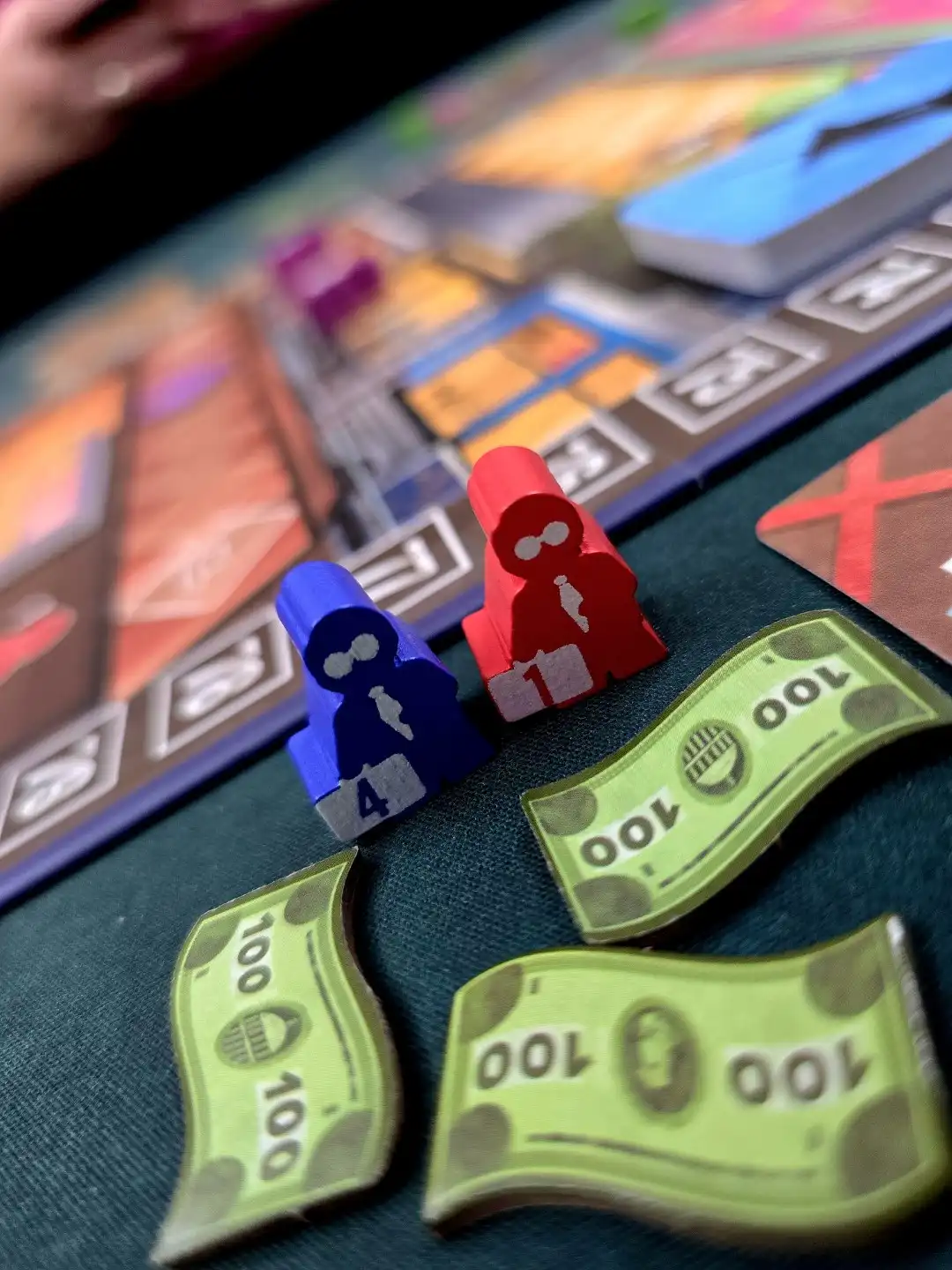
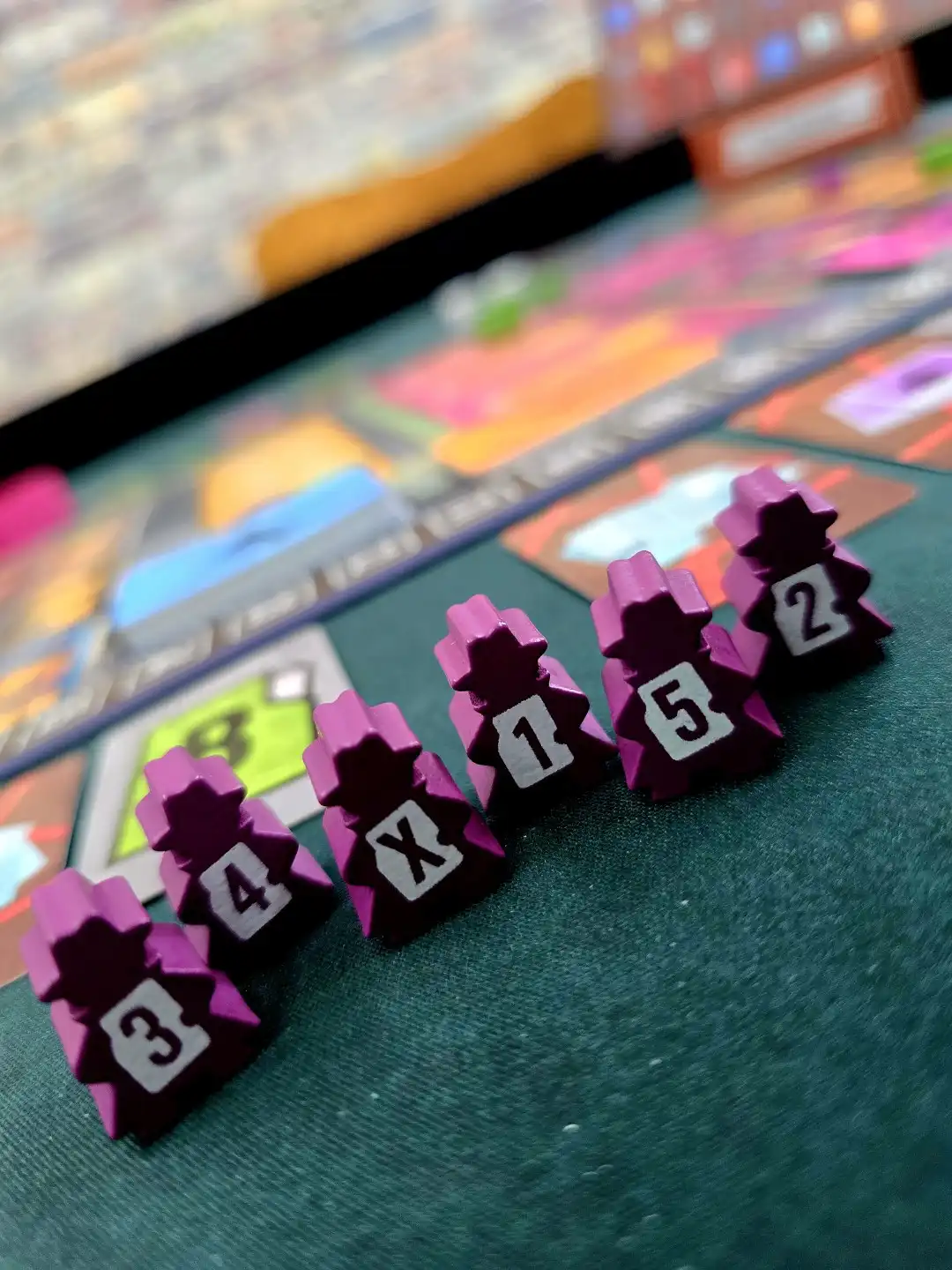
Left: the agents of the government want to shut down your agency ; Right: your team of journalists with varying experience level
Closing thoughts
We misplayed a few things in our first game which caused some added frustrations, but playing more with proper rules solidified the game for us as fun and thematic. It’s definitely more on the lighter side of the spectrum with a low rules overhead, and there is undoubtedly some output randomness when drawing cards for evidence. It happened to me multiple times that I sent out 2-3 meeples to the Buses, only to get absolutely no cards that could net me any new evidence (there is no consolation prize either unfortunately). So if you are more into heavier puzzle games where you can plan and execute your perfect strategy then this one might not be for you.
Otherwise, it is extremely thematic. We are no fans of output randomness especially in euro games, but here the theme absolutely beats everything. We are fully engaged while playing, and with some matching background music it feels almost like a real investigation. So yes, the theme and the central pushpin-gimmick does a great job to counterbalance any irritation from getting unlucky, and the worker placement itself has enough tension to keep you entertained and engaged at all times. It’s just immensely fun getting to pin evidence and to plan the best way to connect what you get.
The components are nice, especially all the screen-printed meeples, and I definitely like the aesthetics. It kind of nails that last-century look. And of course.. Pushpins and red string, the real dream of wannabe investigators!
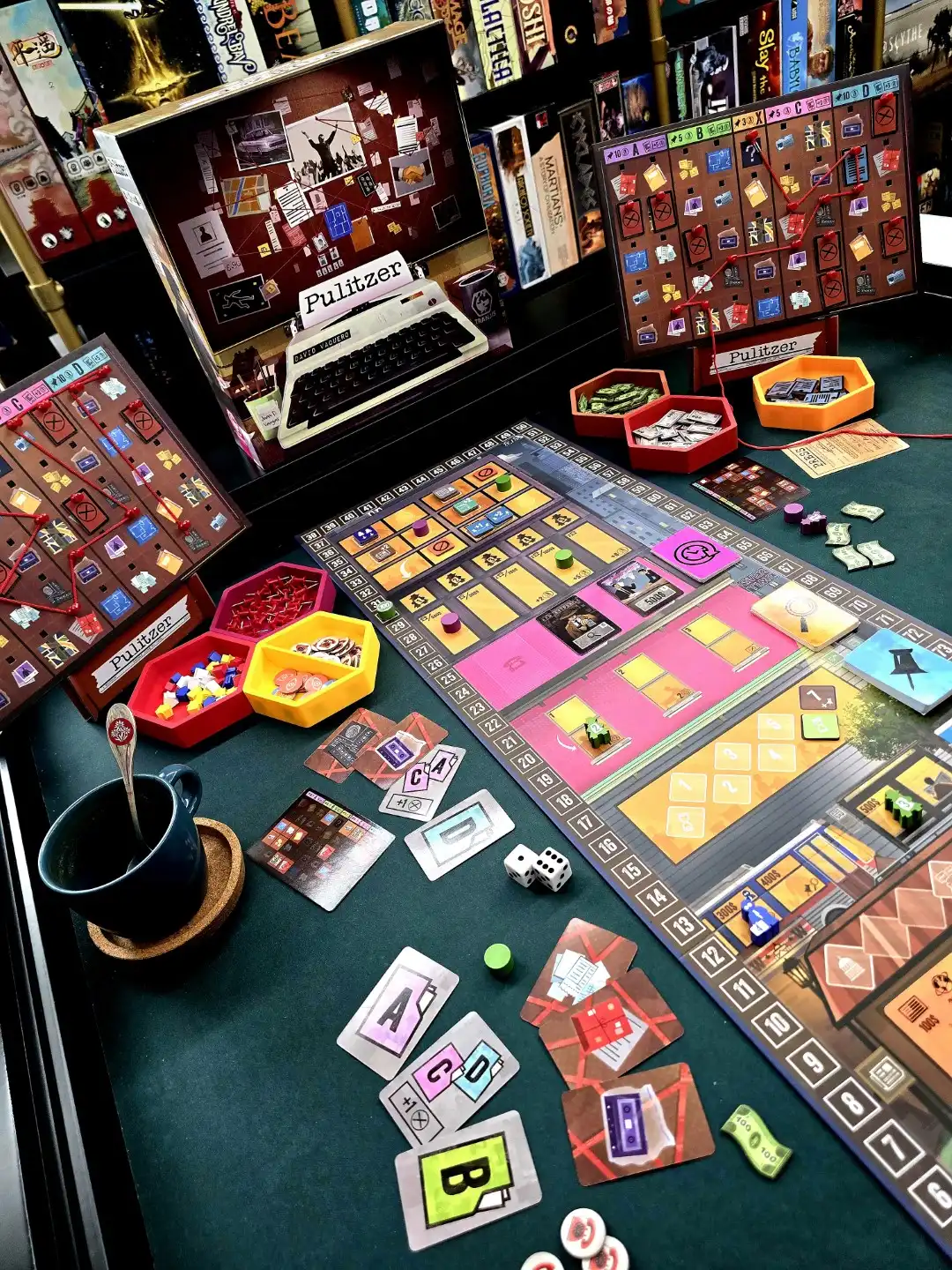
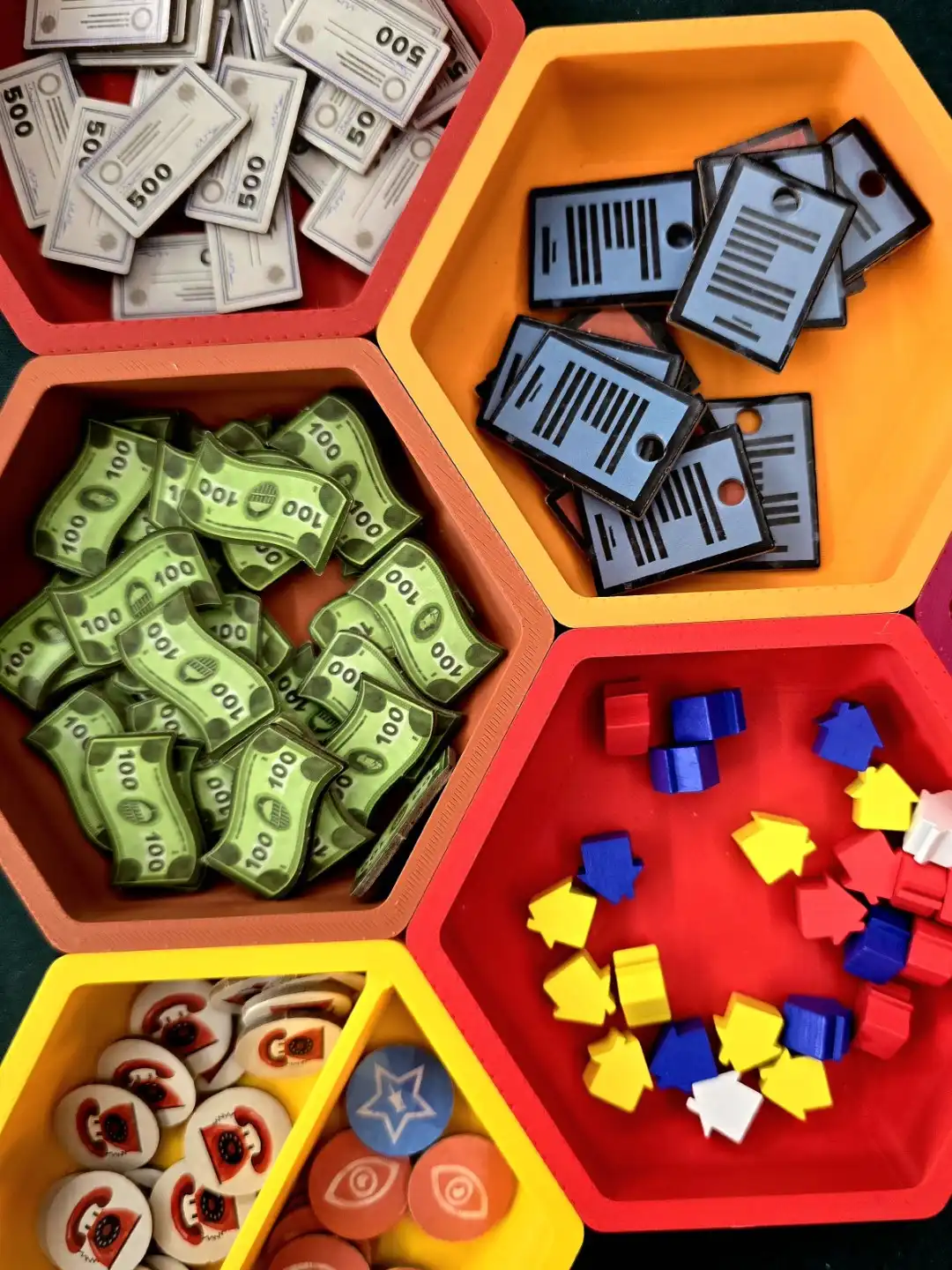
Left: the table presence of Pulitzer ; Right: even the cardboard tokens are nice
Thanks for reading!
A copy of the game was kindly provided by the publisher. Read our content policy.
